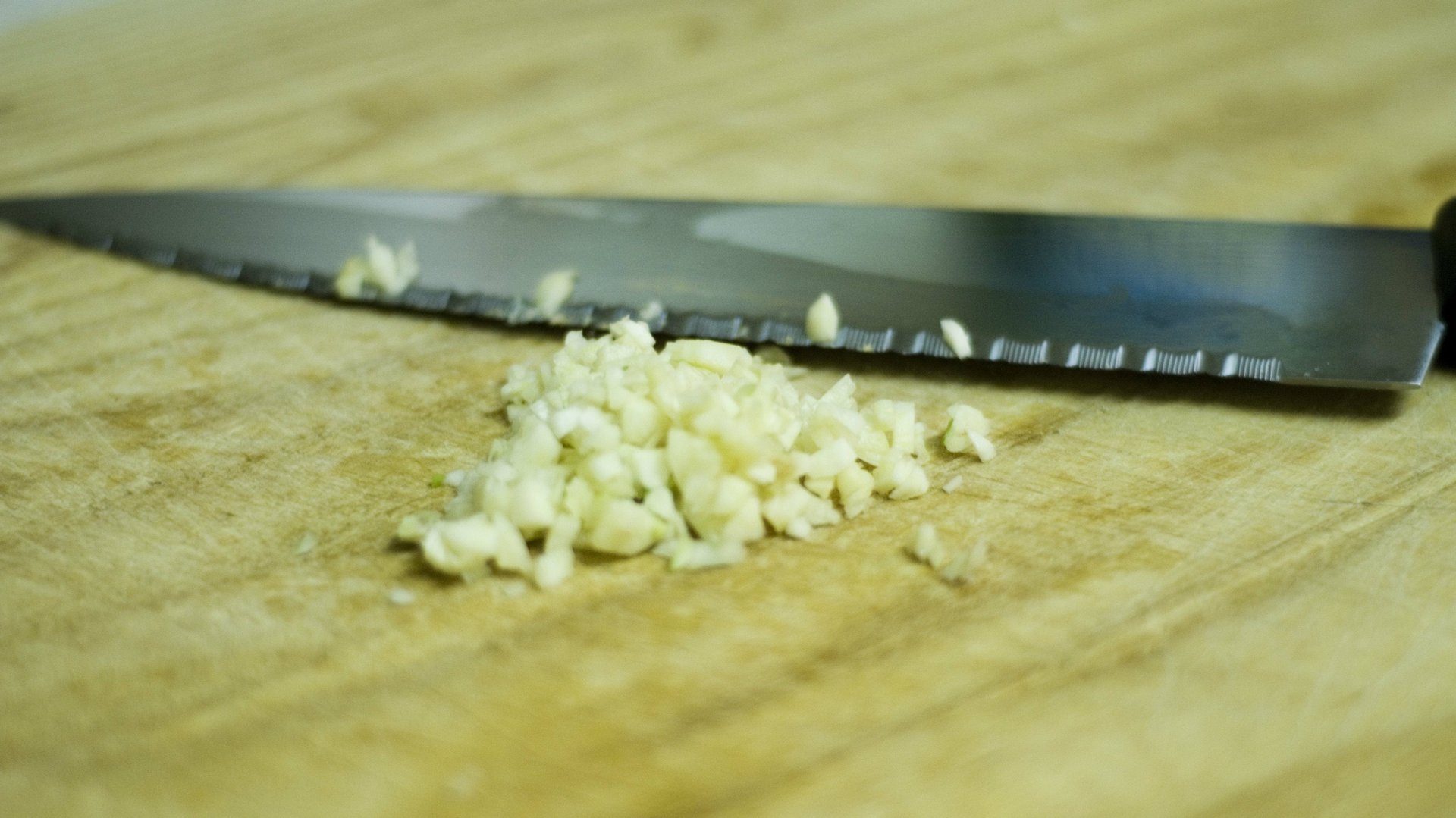The science of how to make your garlic the most garlicky
You know that scene in the classic gangster film Goodfellas, where the guys are making dinner in prison and it looks way better than any dinner you’ve eaten in recent memory? During his year behind bars, explains wise-guy narrator Henry Hill, character Paulie develops a ”wonderful system for doing the garlic”: He uses a razor blade to slice cloves so thin that they liquify in the pan with the oil.


You know that scene in the classic gangster film Goodfellas, where the guys are making dinner in prison and it looks way better than any dinner you’ve eaten in recent memory? During his year behind bars, explains wise-guy narrator Henry Hill, character Paulie develops a ”wonderful system for doing the garlic”: He uses a razor blade to slice cloves so thin that they liquify in the pan with the oil.
Apparently, those tough gangsters couldn’t handle strong garlic. Science suggests that using a super sharp cutting utensil and hot oil, and slicing instead of mincing, actually creates a much milder garlic flavor than the average clove’s true potential.
“You create the flavor by chopping or chewing or mincing or crushing the clove,” Molly Birnbaum, executive editor of Cook’s Science at America’s Test Kitchen told Quartz, because “you’re crushing the cells that are within it.”
Birnbaum explained the science of garlic in a recent collaboration with cooking blog The Splendid Table, and says the flavor of a garlic clove can be largely controlled by the person cooking it. Mauling garlic—whether by knife, food processor or teeth—is what starts the chemical interaction between garlic’s enzyme, alliinase, with the amino acid allin, which produces taste.
“If you want strong tasting garlic, put it through a press or chop it fine so you’ll have more of the interactions,” she says. (Another hack: For extra garlickiness, let chopped garlic sit 10 minutes before cooking. This gives the chemical reaction even more time to develop flavor.) For less intensity, she suggests slicing the garlic with a very sharp knife.
Heat also plays an important role: Alliinase is deactivated at 140°F (60°C), so, as most home chefs have likely already realized, cooking will mellow out the garlic even more.
So sure, follow the Goodfellas method if you like weak flavor. But if you’re after a real kick, mince instead of slicing—and eat it raw.